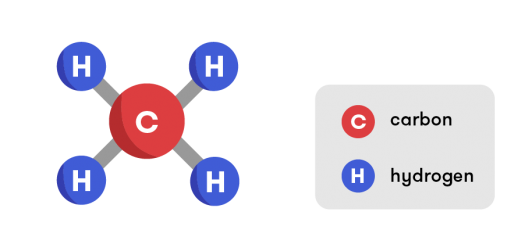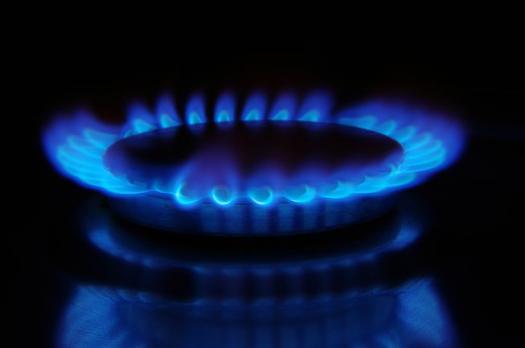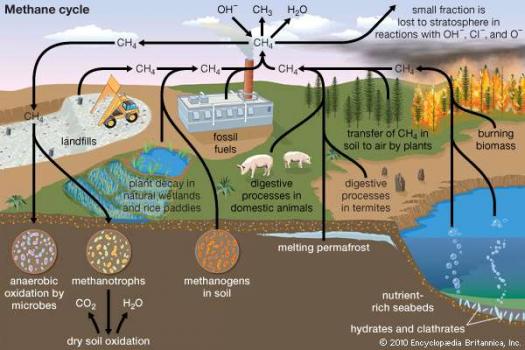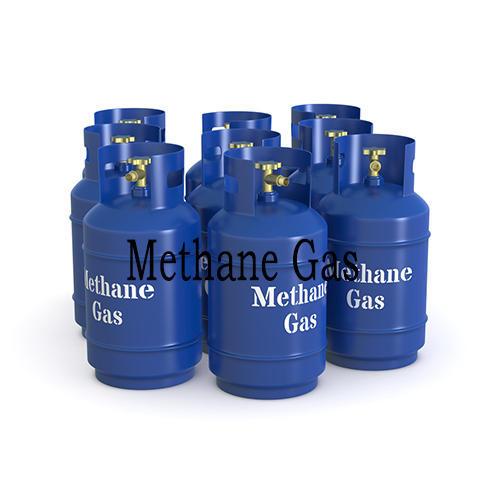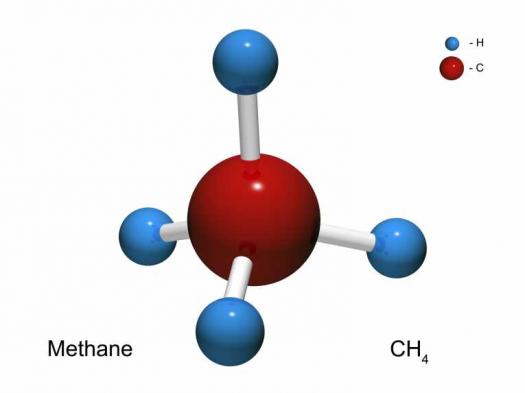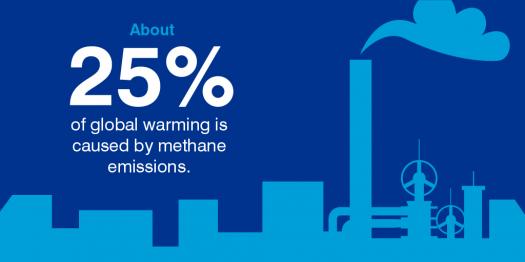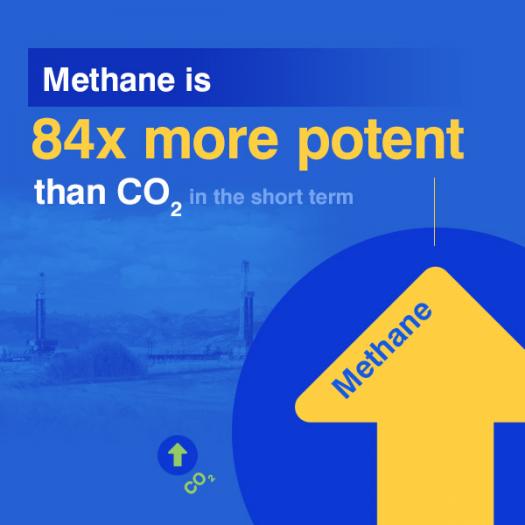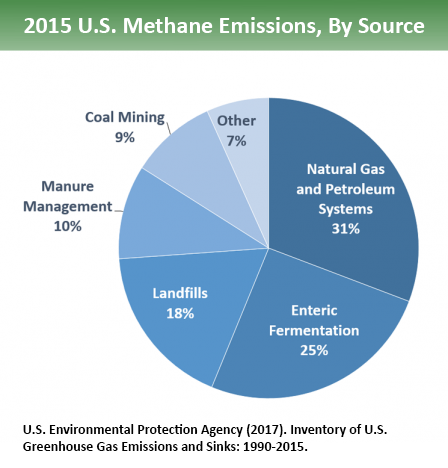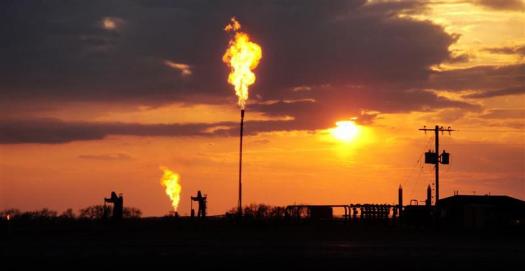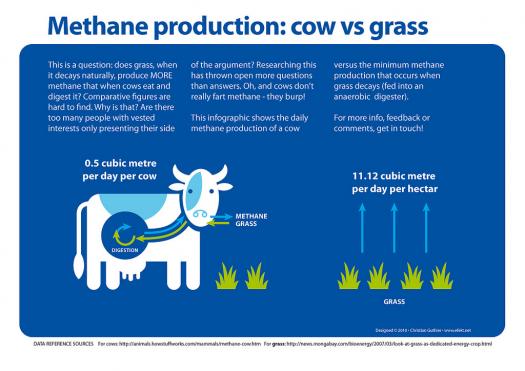What Do You Think You Know About Methane

Methane is a chemical compound that has the chemical formula CH4. The compound is a group-14 hybrid and it is also the most basic alkane known. On that note, how about some questions?
- 1.
Natural methane is found both below ground and under the?
- A.
Sea floor
- B.
Three
- C.
Earth
- D.
Atmosphere
Correct Answer
A. Sea floorExplanation
Natural methane is found both below ground and under the sea floor. Methane is a greenhouse gas that is produced by natural processes such as the decomposition of organic matter. It can be found in underground deposits, known as natural gas reservoirs, as well as in marine sediments on the sea floor. These marine sediments contain organic material that can be broken down by bacteria, resulting in the production of methane. Therefore, the correct answer is "Sea floor."Rate this question:
-
- 2.
When it reaches the surface and the atmosphere, it is known as?
- A.
Atmosphere
- B.
Earth
- C.
Hydrogen
- D.
Atmospheric methane
Correct Answer
D. Atmospheric methaneExplanation
When a substance reaches the surface and the atmosphere, it is referred to as atmospheric methane.Rate this question:
-
- 3.
Methane is used as a fuel for ovens, homes, water heaters and?
- A.
Kilns
- B.
Automobiles
- C.
Turbines
- D.
All of the above
Correct Answer
D. All of the aboveExplanation
Methane is commonly used as a fuel for ovens, homes, and water heaters due to its high energy content and clean burning properties. It is also used as a fuel in kilns, which are used for firing ceramics and other materials. Additionally, methane can be used as a fuel in turbines, which are often used for power generation in industrial settings. Therefore, the correct answer is "All of the above" as methane is used as a fuel in ovens, homes, water heaters, kilns, and turbines.Rate this question:
-
- 4.
Methane was first scientifically identified by?
- A.
Italian
- B.
Switzerland
- C.
Franklin
- D.
A and B only
Correct Answer
D. A and B onlyExplanation
The correct answer is A and B only. Methane was first scientifically identified by both Italian and Swiss scientists.Rate this question:
-
- 5.
Methane is a tetrahedral molecule with four equivalent?
- A.
C-H bonds
- B.
Alkaline
- C.
PH
- D.
None of the above
Correct Answer
A. C-H bondsExplanation
Methane is a tetrahedral molecule because it has four equivalent C-H bonds. In a tetrahedral molecule, the central atom is bonded to four other atoms, and these bonds are arranged in a way that they are as far apart from each other as possible. Methane (CH4) has a carbon atom at the center, which is bonded to four hydrogen atoms. These C-H bonds are equivalent because they have the same bond length and bond strength. Therefore, the correct answer is C-H bonds.Rate this question:
-
- 6.
At room temperature and standard pressure, methane is a?
- A.
Colorless
- B.
Odorless gas
- C.
Alkaline earth metal
- D.
A and B only
Correct Answer
D. A and B onlyExplanation
Methane is a colorless and odorless gas at room temperature and standard pressure. This means that it cannot be seen or smelled, making it difficult to detect without the use of specialized equipment. Therefore, the correct answer is A and B only.Rate this question:
-
- 7.
Solid state exists in several modifications, presently, the number of known solid methane is?
- A.
5
- B.
6
- C.
8
- D.
9
Correct Answer
D. 9Explanation
Solid state exists in several modifications, and methane is known to have multiple solid forms. Therefore, the correct answer is 9, indicating that there are nine known solid forms of methane.Rate this question:
-
- 8.
The primary chemical reactions of methane are?
- A.
Combustion
- B.
Steam reforming
- C.
Halogenation
- D.
All of the above
Correct Answer
D. All of the aboveExplanation
The primary chemical reactions of methane include combustion, steam reforming, and halogenation. Combustion refers to the reaction of methane with oxygen, producing carbon dioxide and water. Steam reforming involves the reaction of methane with steam to produce hydrogen gas and carbon monoxide. Halogenation refers to the substitution of hydrogen atoms in methane with halogen atoms like chlorine or bromine. Therefore, all of the given options are correct as they represent different chemical reactions that methane can undergo.Rate this question:
-
- 9.
In general, methane reactions are difficult to?
- A.
Control
- B.
Contain
- C.
Tame
- D.
All of the above
Correct Answer
D. All of the aboveExplanation
The correct answer is "All of the above" because methane reactions are generally difficult to control, contain, and tame. Methane is a highly flammable gas and can easily ignite or explode if not handled properly. It is also a potent greenhouse gas that contributes to climate change, so controlling and containing methane emissions is important. Additionally, methane can be difficult to harness as a fuel source due to its low energy density and the challenges associated with its extraction and transportation. Therefore, all of the given options accurately describe the difficulties associated with methane reactions.Rate this question:
-
- 10.
The species M* signifies an energetic third body, from which energy is transferred during a?
- A.
Molecular collision
- B.
Chemical reaction
- C.
Hydrocarbon
- D.
None of the above
Correct Answer
A. Molecular collisionExplanation
In molecular collisions, the species M* represents an energetic third body that transfers energy during the collision. This means that during the collision, there is a third molecule involved that has excess energy, which can be transferred to the other molecules involved in the collision. This transfer of energy can result in various outcomes, such as the molecules undergoing a chemical reaction or simply exchanging energy without any chemical changes. Therefore, the correct answer is molecular collision.Rate this question:
-
Quiz Review Timeline +
Our quizzes are rigorously reviewed, monitored and continuously updated by our expert board to maintain accuracy, relevance, and timeliness.
-
Current Version
-
Mar 18, 2023Quiz Edited by
ProProfs Editorial Team -
Feb 23, 2018Quiz Created by
Timmy198
 Back to top
Back to top



